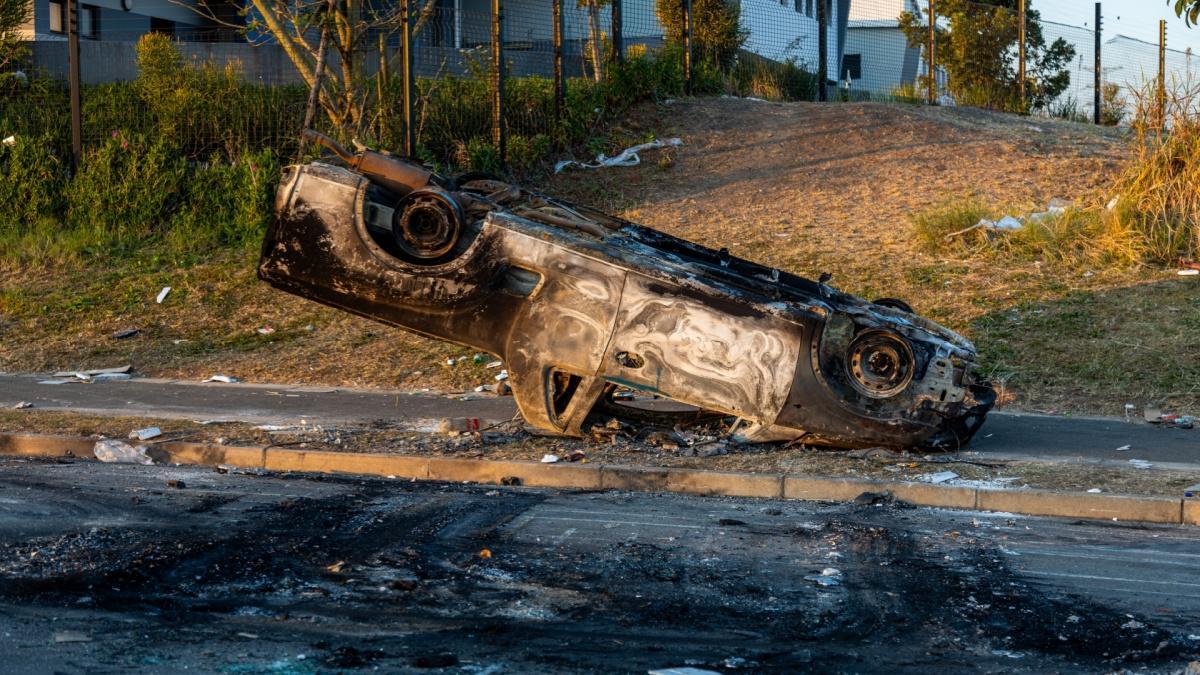Africa-Press – South-Africa. Once again, South Africa has been ranked the country with the most dangerous roads in the world. However, the real story is more complicated than it may appear.
A report released by Zutobi analysed countries worldwide based on indicators including motorway speed limits, blood alcohol concentration limits for drivers, and road traffic death rates.
Based on these factors, South Africa was found to be the most dangerous country in the world to drive in for the second year in a row, placing at the bottom of the 53 countries measured.
The United States and Thailand also placed at the bottom of the list, coming in 51st and 52nd, respectively. While driving in the United States might seem safe, around 40,000 people die in road traffic accidents in the country yearly.
On the other side of the spectrum, Norway was ranked as the safest country in the world for driving for the fourth year in a row.
This was followed by Iceland, Japan, Estonia and Hungary. Overall, the world’s safest countries for driving this year have seen little change from the previous year.
The most dangerous countries for driving have remained consistent since last year, with the three most dangerous seeing no change.
However, Bosnia and Herzegovina saw its road traffic death rate increase by over 86%, from 7.35 to 13.7 per 100,000 people.
Fortunately, several countries improved on this front, particularly Malaysia, which went from 22.5 to 13.9 per 100,000 people.
The average number of estimated road traffic deaths per 100,000 across all countries decreased from 8.9 to 6.3 since the previous year. National speed and blood alcohol concentration limits in each country remained the same.
South Africa – the worst driving in the world
Ranking as the country with the most dangerous roads in the world, South Africa’s overall safety score decreased by 0.52 from 2023 to a dismal 2.88 out of 10.
One measure used to determine the safety of a country’s roads is the seatbelt-wearing rate, which estimates the percentage of car occupants across both sexes who use a seat belt while travelling in the front of a vehicle.
This was based on data taken from the World Health Organization’s Global Health Observatory data repository, the United Kingdom Department of Transport and the European Road Safety Observatory.
This information shows South Africa had an estimated 31% seatbelt-wearing rate. France had the highest seatbelt-wearing rate in the world, at 99.4%.
Bolivia had the lowest seatbelt-wearing rate at 3.5%. There is no national law requiring the use of seatbelts in Bolivia, and very few people report wearing one.
The rankings also looked at alcohol usage on the roads by comparing both the national maximum legal Blood Alcohol Concentration (BAC) level for the general population and the number of road traffic deaths attributed to alcohol.
The UK, USA, Malaysia, and Guyana had the most relaxed legal BAC limits for drivers. These countries permit drivers to have a BAC level of 0.08%.
Hungary had the lowest legal limit, at 0%, followed by Cuba at 0.01%. South Africa fell somewhere in the middle, with a 0.05% legal limit.
Worryingly, South Africa ranked as the country with the highest rate of alcohol-related road traffic deaths at a significant 57.5%.
Malaysia, with one of the highest BAC limits in the world, had the lowest rate of alcohol-related road traffic deaths, at 0.1%.
This is likely explained by the fact that the majority of Malaysia’s population is Muslim. However, the sale of alcohol to non-Muslims is permitted.
Finally, this ranking used maximum motorway speed to determine driving safety in different countries. Bolivia had the lowest speed limit at 80km per hour. On the other hand, Germany actually does not have any speed limit.
Germany is the only country in our study that does not impose a motorway speed limit for cars. The recommended speed limit on the Autobahn is 130km per hour, but drivers often ignore this.
Poland and Turkey also had considerably high speed limits at 140km per hour each. South Africa’s speed limit is set at 120km per hour.
The real story
“International statistics estimate that between 93 and 97% of crashes are due to driver error,” said MasterDrive CEO Eugene Herbert.
Following the 2024/25 Festive Season, Transport Minister Barbara Creecy said 87% of crashes were caused by factors such as jaywalking, fatigue, loss of control over vehicles, speed, drunk driving and dangerous overtaking.
“The real number is likely much higher, as this figure is based on only offenders who were caught.” However, Herbert said the data revealed in the report is limited in many respects.
Notably, South Africa is the only African country in the report, and 143 countries were excluded entirely from the survey.
“We take this report in a very serious light and readily agree the situation is dire, but we also need to take note that the data is from various sources, some of which we know to be notoriously unreliable.”
Thus, Herbert explained that while these findings can offer lessons, they also create an inadequate picture of the situation.
“While some citizens may be left unsurprised, others may be questioning how South Africa is worse than countries with political instability like Ukraine or major economic issues like South Sudan. This is because neither was in the study.”
On the other hand, the study did not even consider many aspects that make South African roads unsafe. These include potholes, poor road quality, broken traffic signals, and the number of roads without functioning street lights.
General disregard for traffic regulations, illegal pointsmen, corrupt traffic police, and hijackers are common in South Africa and affect overall road safety.
Herbert said that while the data in the report should not be dismissed altogether, there is potential to learn more than is currently available.
“It emphasises the need to gather accurate data for a more comprehensive understanding of worldwide road safety success and challenges.”
For More News And Analysis About South-Africa Follow Africa-Press






